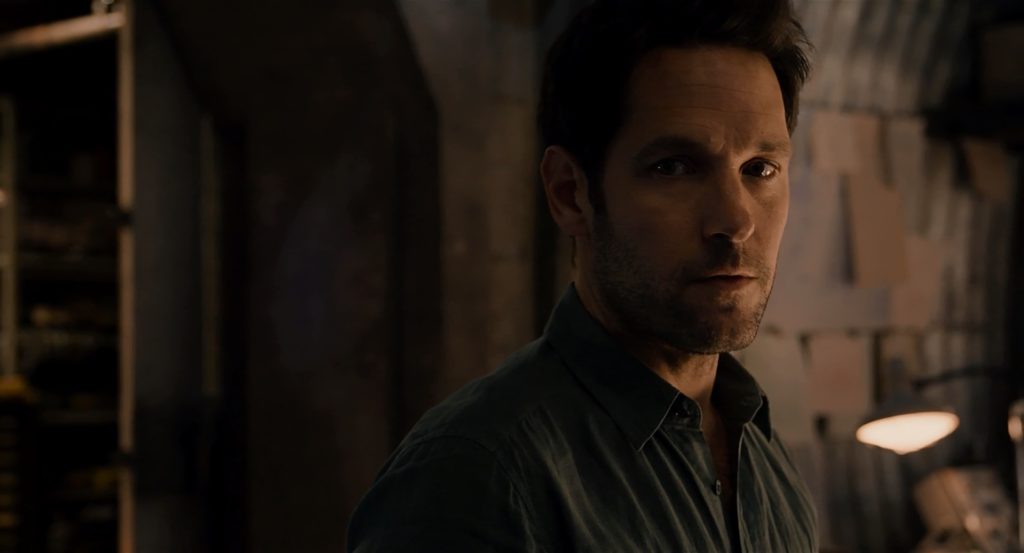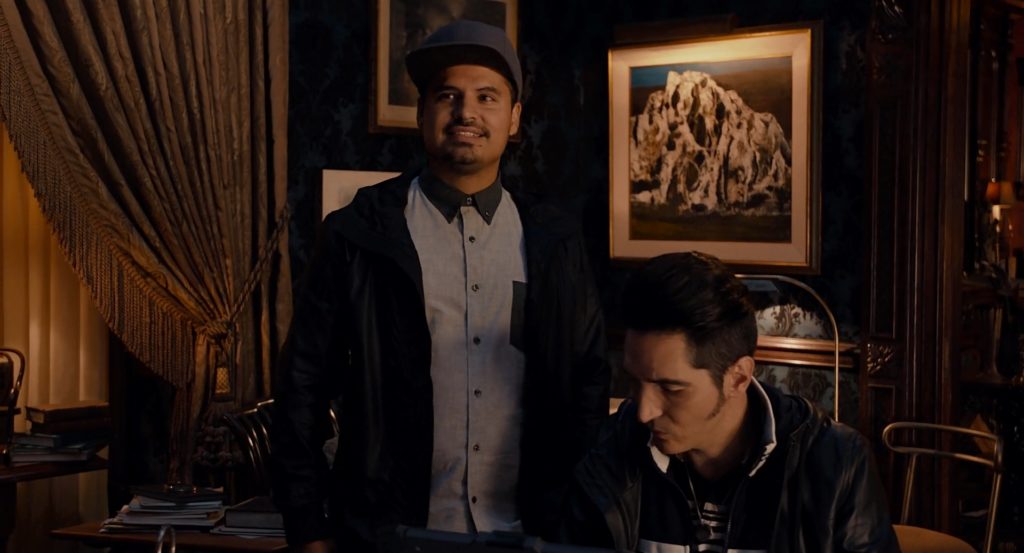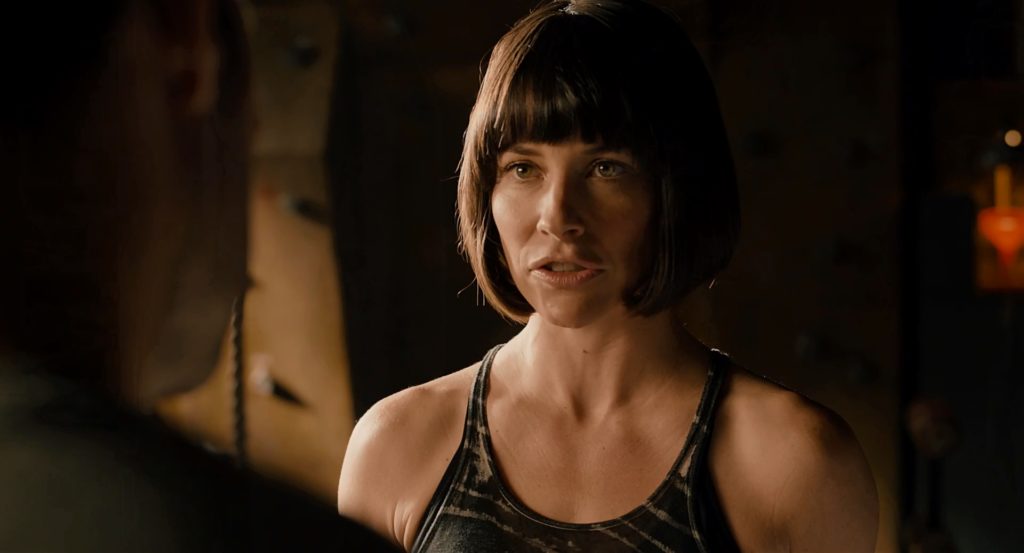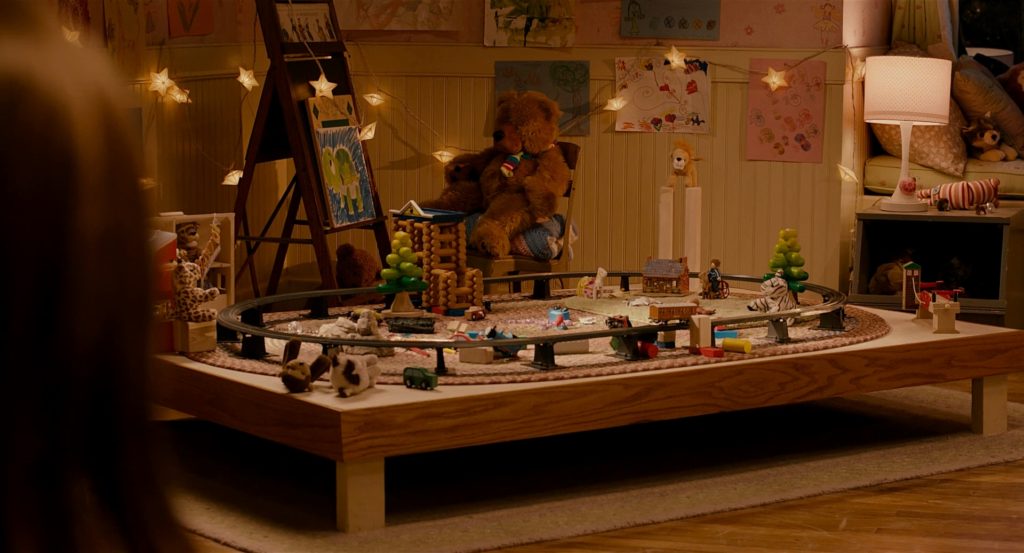In this weekly series, we chronicle the long road undertaken by the Marvel Cinematic Universe movies to arrive at Avengers: Infinity War. We introspect and discuss the movies from a critical and commercial standpoint while also considering the development efforts that went behind them. These articles may be occasionally sprinkled with spoilers so please make sure to skip the relevant sections when reading.
This post is about the 2015 movie Ant-Man, the twelfth chapter in the Marvel Cinematic Universe. To check out other entries in our Road to Infinity War series, click here.
An unanticipated shift of release dates and changes in classifying its movies into phase lead to the Marvel Cinematic Universe winding up in a strange spot in 2015. After delivering an event movie at the scale of Avengers: Age of Ultron that featured world-ending destruction at the hands of a sentient robot, Marvel Studios followed it up with something relatively smaller, in the most literal sense. The movie that would thus wrap up Phase Two of the MCU was about a superhero with a suit that gave him the ability to shrink in size but increase in strength. Sticking to the comics, the hero and the movie aptly go by the rather self-explanatory moniker of Ant-Man.
An Avengers movie is a tough act to follow as it is, let alone top. So how do you go from a place where an entire city dropped on civilian population to something so small in scale? And how do you justify the hero being called Ant-Man who with a name like that looks poised to become the butt of all jokes, just as DC’s Aquaman has been throughout the comics? One possible approach is that you go with the flow, by taking your movie as lightly as you would have others take it. A lot of the seriousness then gets thrown out of the window. Next, you blend it with a suitable yet exciting genre like a heist movie to create something that looks fresh despite a core DNA derivative of countless movies in the past, evoking a standard mentor-mentee relationship as well as replete with the training montage and all. Finally, you throw in a bunch of wacky supporting characters with weird looks, hairstyles, accents and personalities that you hope will stay with audiences long after they’ve left the theater.
When Ant-Man comes up during discussions, what springs to mind the most is the development troubles the movie went through. Sure most movies have their share of production issues to deal with, but this one underwent something much more serious – a rather late change of directors. For as long as one could remember, Ant-Man had been Edgar Wright’s project. The entire tone of the movie, from the comic aspects to the heist angle as well as the shrinking effects and the movie’s overall structure was largely thought out by Wright and co-writer Joe Cornish. Wright was attached to direct the movie as early as 2004 and worked on several drafts, rewriting and revisiting them to get things just perfect and up to his own standards. He even shot a test reel with Marvel that was shown at Comic-Con 2012 which somewhat made it into the movie as a part of one of its key sequences. The footage was extremely well received and it was all but given that Wright would helm the movie, having gone as far as pre-production in 2014. That is, until something happened and things didn’t work out. Citing the now standard creative differences excuse, Wright departed from the project around March 2014. While the exact minutiae of the reasons for Wright’s departure remain unavailable, it was rumored that Marvel was rewriting parts of Ant-Man without informing or consulting Wright. This didn’t sit well with the director who felt it was a betrayal of sorts, especially given his penchant for writing and directing his own material. Marvel moved on and began scouting potential directors who would align with their vision of the movie, eventually finding one in Peyton Reed. Reed only agreed with the direction the studio was taking Ant-Man in, but convinced them he could add more to it. Under Reed’s tutelage then, certain aspects of the movie changed including a tighter connectivity with the MCU in terms of tone and narrative as well as an expanded role for Evangeline Lily’s Hope Van Dyne. Despite the setbacks caused to the movie’s production due to this shift, it made it to its intended July 2015 release date. Strangely enough, this would turn out to be less serious of an issue given the troubles some later comic-book movies underwent.
That is, until something happened and things didn’t work out. Citing the now standard creative differences excuse, Wright departed from the project around March 2014. While the exact minutiae of the reasons for Wright’s departure remain unavailable, it was rumored that Marvel was rewriting parts of Ant-Man without informing or consulting Wright. This didn’t sit well with the director who felt it was a betrayal of sorts, especially given his penchant for writing and directing his own material. Marvel moved on and began scouting potential directors who would align with their vision of the movie, eventually finding one in Peyton Reed. Reed only agreed with the direction the studio was taking Ant-Man in, but convinced them he could add more to it. Under Reed’s tutelage then, certain aspects of the movie changed including a tighter connectivity with the MCU in terms of tone and narrative as well as an expanded role for Evangeline Lily’s Hope Van Dyne. Despite the setbacks caused to the movie’s production due to this shift, it made it to its intended July 2015 release date. Strangely enough, this would turn out to be less serious of an issue given the troubles some later comic-book movies underwent.
The plot centers around an older retired Ant-Man named Hank Pym (Michael Douglas) recruiting a cat burglar Scott Lang (Paul Rudd) recently released from prison to don the suit and pull off a heist with world-ending stakes. Or at least that’s the genesis. Lang was put into prison after he returned money to customers that his employer VistaCorp secretly stole. Desperate to get back to earning money so he can provide for his ex-wife Maggie and daughter Cassie’s child support, he takes on a theft job courtesy a tip from his fast-talking nonsense-spouting friend Luis. Lang executes a brilliant and intelligent heist only for the prize to turn out to be an Ant-Man suit and is caught in the process of returning it. That’s when Pym pays him a visit and asks Lang to join him.
The relationships of other characters with Hank Pym are focal to the plot. There’s his daughter Hope Van Dyne who shares a strained relationship with Pym after the death of Janet Van Dyne, Hope’s mother. Moreover, Pym conceals the true reasons of her death which further aggravates her pain and refuses to let his daughter don the suit despite she being much more capable of and better suited for it than petty thief Lang. Then there’s Darren Cross, a former protege of Hank Pym who the latter pushed away when he realized Darren’s obsession with replicating the Pym Particles, a proprietary solution invented by Hank that makes shrinking living tissue possible. He’s been trying to recreate the formula ever since, and eventually has a breakthrough which necessitates speeding up the heist. Pym also briefly laments about Cross as being the son he never had. And finally, there’s Lang himself who shares a mentor-mentee dynamic with Pym lifted straight from the comics. The fact that we have one superhero passing on the mantle to another, while fairly common in the books, is kind of refreshing to see in a movie. How many times, after all, have you seen Batman or Spider-Man train their successors in live-action, or even have one? What’s truly odd, narrative-wise is why Hank Pym would trust a burglar like Scott Lang who despite his noble intentions is ultimately a stranger. Sure he has his Robin Hood past and probably a heart of gold too, but the fact that Pym so openly reveals everything about his life, the Pym Particles and his former missions as S.H.I.E.L.D. to a thief he’s only been observing behind CCTV cameras just seems like an odd choice that doesn’t come across convincingly, despite it’s necessity to advance the story. And after the amount of secrecy Pym kept the Particles in all these years, it seems baffling that he would just hand it over to Lang by letting him steal the suit, psychically knowing that he will be confounded and horrified by wearing it and come back to return it. There is an attempt to explain this narrative choice by reasoning that Scott is expendable as against Hank’s daughter Hope, but is that enough to justify Hank trust him with his life’s work? It’s a plan that relies on a lot of assumptions and comes across as contrived for the sake of moving on with the movie. And to think that Hank and Hope would let Lang choose the three goofballs in a heist as important as this is something that can only happen in a fun action flick.
What’s truly odd, narrative-wise is why Hank Pym would trust a burglar like Scott Lang who despite his noble intentions is ultimately a stranger. Sure he has his Robin Hood past and probably a heart of gold too, but the fact that Pym so openly reveals everything about his life, the Pym Particles and his former missions as S.H.I.E.L.D. to a thief he’s only been observing behind CCTV cameras just seems like an odd choice that doesn’t come across convincingly, despite it’s necessity to advance the story. And after the amount of secrecy Pym kept the Particles in all these years, it seems baffling that he would just hand it over to Lang by letting him steal the suit, psychically knowing that he will be confounded and horrified by wearing it and come back to return it. There is an attempt to explain this narrative choice by reasoning that Scott is expendable as against Hank’s daughter Hope, but is that enough to justify Hank trust him with his life’s work? It’s a plan that relies on a lot of assumptions and comes across as contrived for the sake of moving on with the movie. And to think that Hank and Hope would let Lang choose the three goofballs in a heist as important as this is something that can only happen in a fun action flick.
Speaking of the three goofballs, David Dastmalchian plays Kurt as a hacker influenced by Elvis Presley’s looks and a unique Russian accent while Tip “T.I.” Harris plays Davis as the cocky and overconfident man behind the wheels with just the right bit of humor. The scene stealer though is Michael Pena’s Luis who with his transfixed grin, semi-cocky demeanor, and happy-go-lucky attitude never minds what life throws at him. His fast-talking mannerisms and narration style that involves stretching and overstretching unwanted details of a story before arriving at the point make for some great laughs. Much has been made about it, including several fan requests to have Luis narrate movie plots, but he adds a little bit of an extraordinary quality to a movie that could otherwise have come across as a story with some standard save-the-world roots.
The visuals in the movie are astounding. Worthy of notable mentions are all the shrinking sequences with a tiny Ant-Man as well as the Quantum Realm sequences towards the end. As soon as Lang goes ant-sized, the movie shifts perspective to his point of view and puts its macrophotography to use by showcasing all environments as gigantic set pieces. The first time Lang puts on the suit, you get to see an elaborate sequence played out in detail that gives you the full sense of what it’s like to be at the ground level. Similarly, the Quantum Realm sequences have a surreal, other-worldly quality to them and truly transport you to a world which feels like there’s no coming back from. In that dimension, time and space cease to exist and the visuals really help sell that notion. What’s also interesting about Ant-Man is how small scale the battle stakes are in the climactic fight. The finale sees Yellowjacket fighting Ant-Man aboard a toy-train set and shifts perspective from closeups to far-away shots. Just when you feel the danger and threat up close, Peyton Reed cuts to a long shot from a human’s perspective and the stakes are instantly lowered to that of a toy-fight. It’s something that seems tailor made for kids. Personally, I loved the unique approach to the battle which, instead of having world-ending consequences, really felt more like two toys fighting with each other. It truly helps differentiate Ant-Man‘s climax from some other contemporary movies and makes it feel less routine.
What’s also interesting about Ant-Man is how small scale the battle stakes are in the climactic fight. The finale sees Yellowjacket fighting Ant-Man aboard a toy-train set and shifts perspective from closeups to far-away shots. Just when you feel the danger and threat up close, Peyton Reed cuts to a long shot from a human’s perspective and the stakes are instantly lowered to that of a toy-fight. It’s something that seems tailor made for kids. Personally, I loved the unique approach to the battle which, instead of having world-ending consequences, really felt more like two toys fighting with each other. It truly helps differentiate Ant-Man‘s climax from some other contemporary movies and makes it feel less routine.
The movie belongs to the quartet of Corey Stoll, Evangeline Lily, Paul Rudd and Michael Douglas. Stoll portrays Cross’ sense of longing for appreciation from Pym and his disappointment when his achievements aren’t acknowledged fairly well in the limited screen time he gets. Evangeline Lily does a picture-perfect job with Hope and the expanded role really helps her shine while also teasing her suiting up as the future Wasp, and she would undoubtedly make a kick-ass one leaving Lang biting the dust. Speaking of Lang himself, Paul Rudd has an affable charm and wit to him and manages to convey a lot simply through his eyes. He lends a sympathetic quality to what is otherwise a burglar and at times, an asshole and bounces off his dynamic neatly with Hank Pym. Pym on the other hand played by the legendary Michael Douglas plays it pretty straight, no frills, giving a contained performance with most of his narration at par with the likes of Morgan Freeman (or maybe less).
Lastly, there’s an exciting cameo by Anthony Mackie as the Falcon which stretches into an extended fight sequence. Mackie plays his part well and the said sequence follows on from the events of Age of Ultron with Lang ending up infiltrating the new Avengers facility that Mackie now protects and safeguards. It was a genuine surprise and delight to witness in theaters, because of how closely-guarded Mackie’s involvement was kept. Lang ends up fighting an Avenger which plays an important consequence in his involvement in Marvel’s next movie, as teased in the post-credits scene. This was also technically the first Marvel Studios movie to bring up Spider-Man in some capacity towards the end. I remember getting positive chills hearing that line and imagining the prospect of the iconic web-slinger joining the Avengers. Ant-Man was one of Marvel’s lesser earning films, which was expected given that it was a fairly typical origin story movie, bringing an equally lesser known character into the fold. Regardless, it managed to make $519 million worldwide that, in retrospect, was more than the grosses of Marvel’s other origin flicks like Thor, Captain America or The Incredible Hulk. Fairly satisfied with the success and the reception the movie received, Marvel wasted no time in commissioning a sequel due to hit theaters in summer of 2018. The movie also gave Marvel an added trump card, one that it would end up using at the start of Phase Three, in a movie dealing with an internal rift between its heroes. Overall, Ant-Man as a movie is a breezy ride that sits at the pinnacle of popcorn entertainment while offering just that, and nothing more.
Ant-Man was one of Marvel’s lesser earning films, which was expected given that it was a fairly typical origin story movie, bringing an equally lesser known character into the fold. Regardless, it managed to make $519 million worldwide that, in retrospect, was more than the grosses of Marvel’s other origin flicks like Thor, Captain America or The Incredible Hulk. Fairly satisfied with the success and the reception the movie received, Marvel wasted no time in commissioning a sequel due to hit theaters in summer of 2018. The movie also gave Marvel an added trump card, one that it would end up using at the start of Phase Three, in a movie dealing with an internal rift between its heroes. Overall, Ant-Man as a movie is a breezy ride that sits at the pinnacle of popcorn entertainment while offering just that, and nothing more.
With this, we wind up Marvel’s Phase Two of movies in the MCU. Here’s a recap:
- The Road To Avengers: Infinity War – Iron Man 3
- The Road To Avengers: Infinity War – Thor: The Dark World
- The Road To Avengers: Infinity War – Captain America: The Winter Soldier
- The Road To Avengers: Infinity War – Guardians of the Galaxy
- The Road To Avengers: Infinity War – Avengers: Age of Ultron
- The Road To Avengers: Infinity War – Ant-Man





